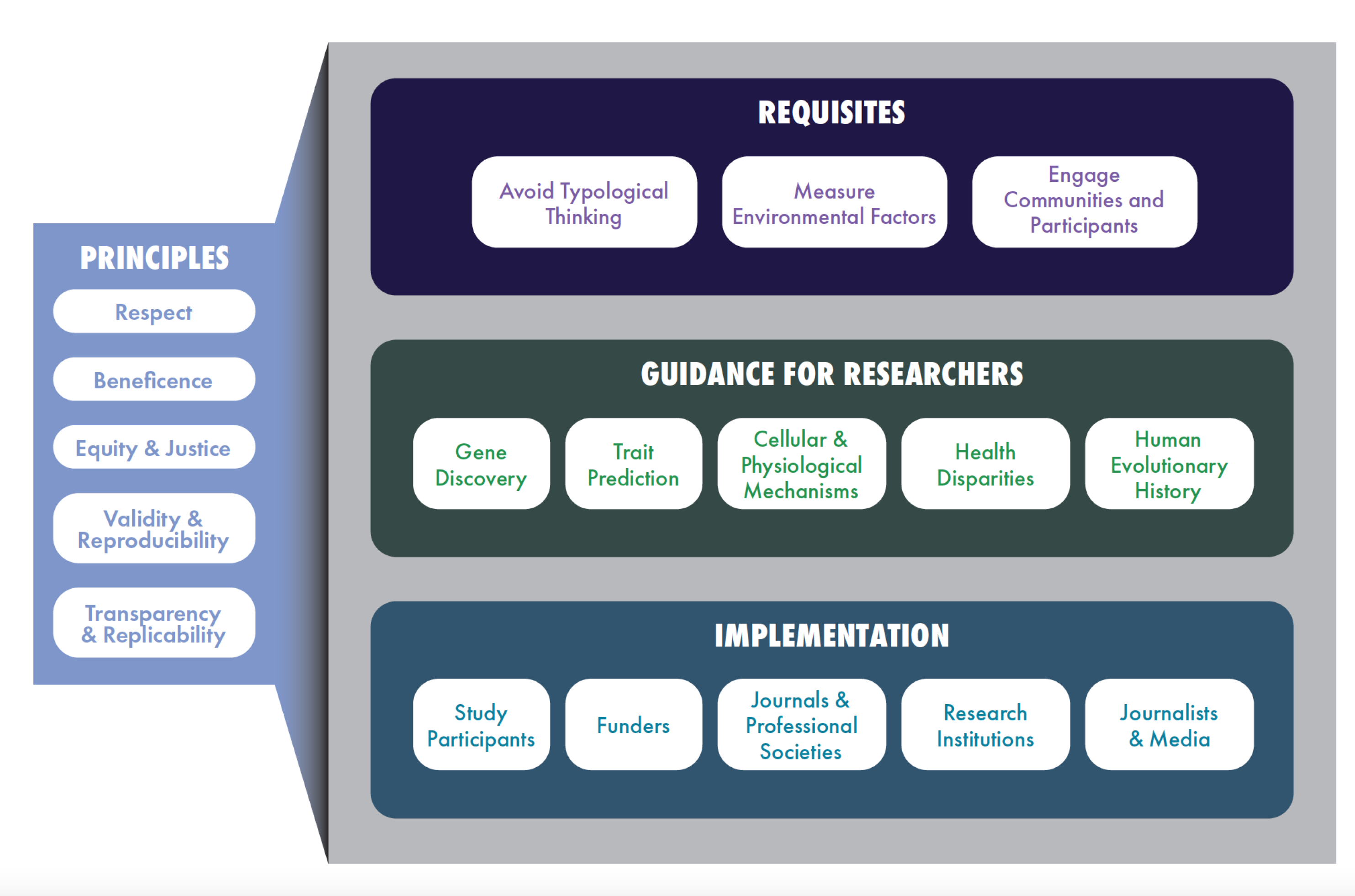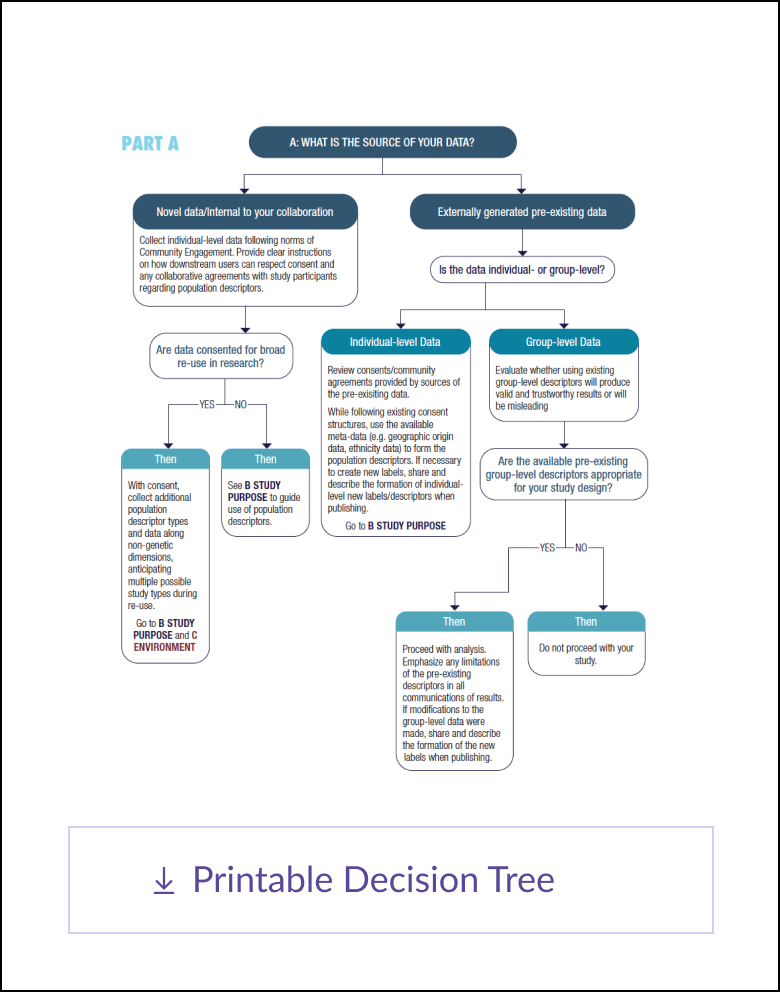GUIDING PRINCIPLES
Everyone who engages in research with genomics data is a decisionmaker about the use of population descriptors. Because research in the field is dynamic and the report’s specific best practices may not cover every research situation, the report outlines guiding principles to foster ethical and empirical best practices for supporting trustworthy research. The guiding principles are respect, equity & justice, beneficence, validity & reproducibility, and transparency & replicability.
- Respect for individual and community preferences, norms, and values should inform approaches when determining which population descriptors to use in research.
- Equity and justice require determining whether and how the selection and use of population descriptors will produce equitable benefit to avoid reinforcing existing inequities or introducing new ones.
- Beneficence calls on researchers to assess how the selection of population descriptors may not only generate potential good but also potential harm and requires consideration of the effect of population descriptors on health equity.
- Validity and reproducibility require judicious evaluation of research objectives and assessment of the appropriateness and purpose of including population descriptors.
- Transparency and replicability include the obligation to provide a clear rationale for the selection and/or use of population descriptors and to explain decision-making processes in an open and accessible manner to both other researchers and research participants, thus enhancing replicability.

